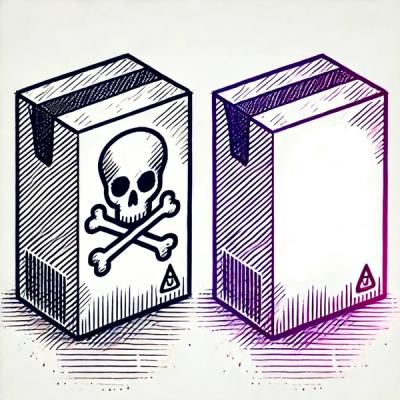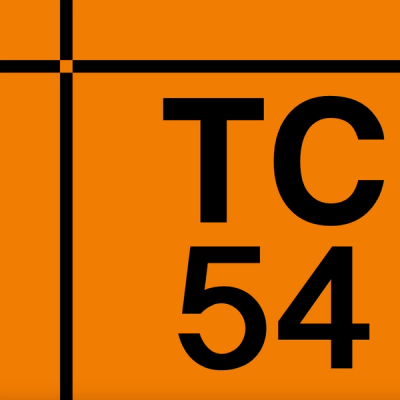
Security News
38% of CISOs Fear They’re Not Moving Fast Enough on AI
CISOs are racing to adopt AI for cybersecurity, but hurdles in budgets and governance may leave some falling behind in the fight against cyber threats.
transmission-delete-unwanted
Advanced tools
transmission-delete-unwanted is a tool that makes it possible to delete
specific files from Transmission torrents after they have been downloaded,
with correct handling of edge cases such as overlapping pieces.
$ transmission-delete-unwanted --torrent-id 88825ccd2812867852a405409313c5aeb6e9b7dc
>>> PROCESSING TORRENT: "Linux ISOs" (hash: 88825ccd2812867852a405409313c5aeb6e9b7dc id: 42)
Wanted: 3224 pieces (25.2 GiB); present: 13266 pieces (103.6 GiB); present and wanted: 3224 pieces (25.2 GiB); present and not wanted: 10042 pieces (78.5 GiB)
Trimming: Linux ISOs/Debian.iso
Removing: Linux ISOs/Fedora.iso
Removing: Linux ISOs/Arch.iso
All done, kicking off torrent verification. This may take a while...
Torrent verification successful.
This package also includes transmission-mark-unwanted, a tool that ingests a
list of file names and marks the corresponding files as "unwanted" (i.e. do not
download) in Transmission.
WARNING: while great care was used to ensure transmission-delete-unwanted
will not mess up wanted torrent data (including extensive automated test
suites), the possibility of a data corruption bug cannot be excluded. If your
torrent data is valuable, it is a good idea to make a backup before running
the script. You can get rid of the backup as soon as the torrent passes the
automatic verification step.
pipx install transmission_delete_unwanted.
transmission-remote --no-get, or use the bundled
transmission-mark-unwanted tool.transmission-delete-unwanted.
--help for options.transmission-delete-unwanted do?For each torrent that contains files that are (at least partially) downloaded
but not wanted, transmission-delete-unwanted does the following:
If you naively just delete the files you don't want, it is almost certain that your torrent will not pass verification anymore, and Transmission will have to re-download a few bits and pieces.
This is not a Transmission-specific limitation; fundamentally, it is a consequence of how torrents work. From a low-level BitTorrent protocol perspective, a torrent is just a giant continuous blob of data that is split into equal-sized "pieces", which is the smallest unit of data that can be verified (hash checked) and made available for seeding. If the torrent contains multiple files, these are just concatenated together; the torrent metadata indicates the position of each file within the continuous blob.
Crucially, piece boundaries are not related to file boundaries in any way. This means that it is possible, and in fact very likely, that some pieces will straddle a file boundary: that is, some pieces contain both the end of a file and the beginning of the next file.
If you delete a file whose first and/or last piece overlaps with adjacent, wanted files, you are de facto corrupting these pieces, and Transmission will (correctly) see them as such. These pieces cannot be advertised for seeding anymore and will have to be re-downloaded.
The main value proposition of transmission-delete-unwanted is it will not fall
into this trap and will correctly preserve overlapping pieces, while still
deleting the remaining unwanted pieces. The tool is also less error-prone as it
does not involve mapping unwanted files manually.
.part files?If transmission-delete-unwanted is unable to remove a file because it contains
data from overlapping wanted pieces (see previous answer), then it will trim
the file instead. Trimming means that the file is replaced by a new file which
only contains data from these overlapping pieces and nothing else, so that most
of the disk space can still be reclaimed.
The .part suffix makes it clear that this is not a valid, usable file anymore.
This suffix is recognized by Transmission; in fact, it is the same suffix
Transmission itself uses to mark partially downloaded files if the
rename-partial-files Transmission setting is used.
Note that these partial files may look like they are still taking the full
amount of disk space, but that is not actually the case. The partial files
transmission-delete-unwanted produces are sparse files - that is, most of
the file is a "hole" and does not actually take up disk space. Use the du
command to see the actual amount of disk space the file is using.
transmission-delete-unwanted does not remove it!If transmission-delete-unwanted produced a .part file instead, see the
previous answer.
There is one rare edge case where transmission-delete-unwanted may not remove
nor trim the file even though it is unwanted: if the file is only composed of
wanted pieces - i.e. the file is so small that it is only composed of 1 or 2
pieces and these pieces overlap with wanted files - then there is nothing that
can be done about this file without corrupting wanted pieces. In that case the
script will just leave the file alone.
Yes, and it will behave as you'd expect. Even partially downloaded files can be cleaned up.
The only caveat is this will result in torrent verification being requested in the middle of a download, which may(?) cause partially downloaded torrent pieces to be re-downloaded.
FAQs
Delete unwanted files in a Transmission torrent
We found that transmission-delete-unwanted demonstrated a healthy version release cadence and project activity because the last version was released less than a year ago. It has 1 open source maintainer collaborating on the project.
Did you know?

Socket for GitHub automatically highlights issues in each pull request and monitors the health of all your open source dependencies. Discover the contents of your packages and block harmful activity before you install or update your dependencies.

Security News
CISOs are racing to adopt AI for cybersecurity, but hurdles in budgets and governance may leave some falling behind in the fight against cyber threats.

Research
Security News
Socket researchers uncovered a backdoored typosquat of BoltDB in the Go ecosystem, exploiting Go Module Proxy caching to persist undetected for years.

Security News
Company News
Socket is joining TC54 to help develop standards for software supply chain security, contributing to the evolution of SBOMs, CycloneDX, and Package URL specifications.